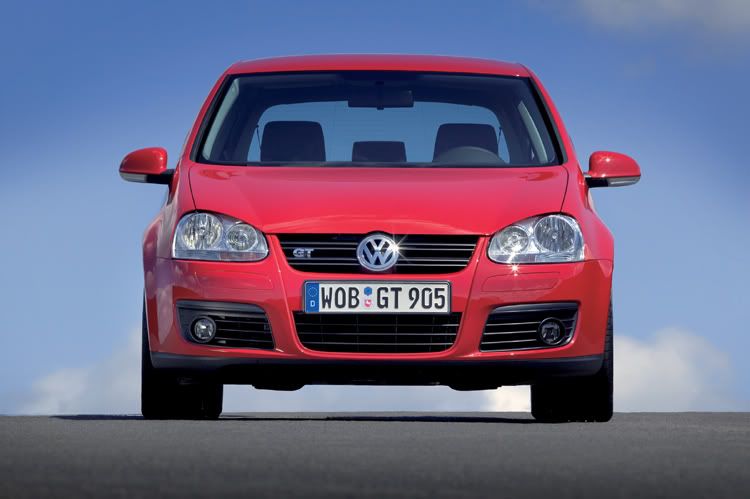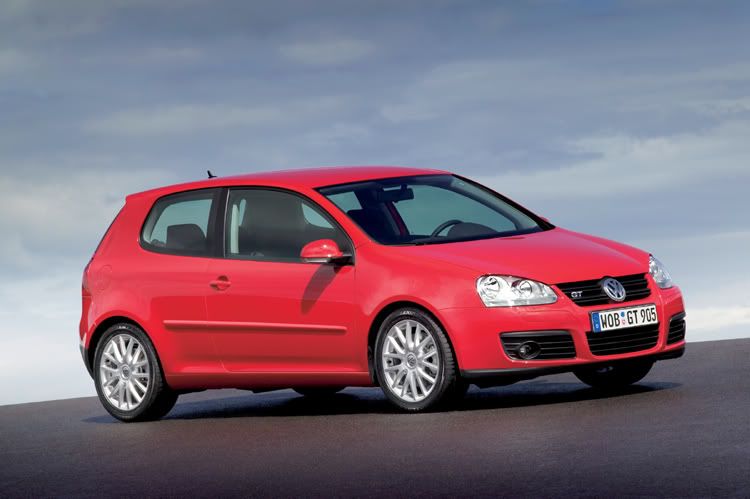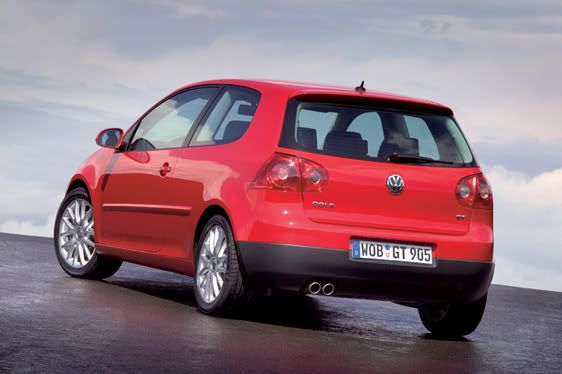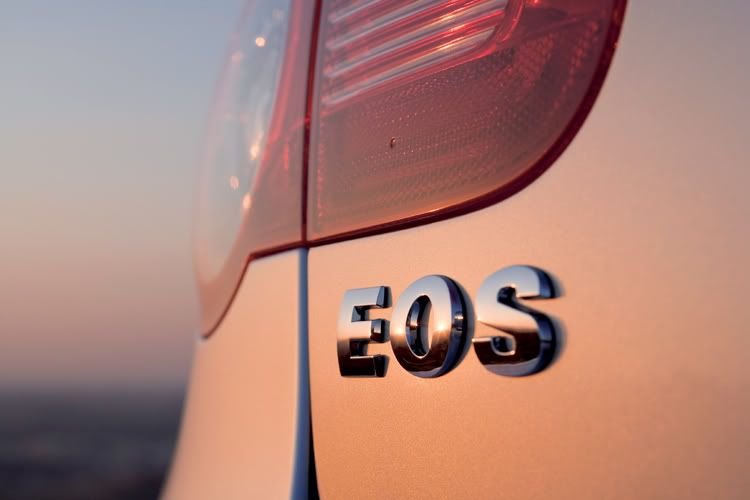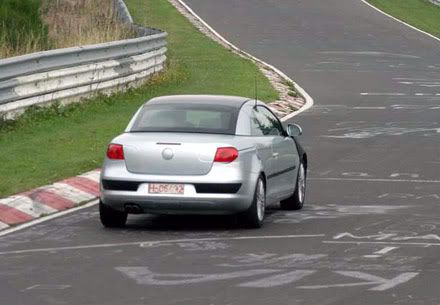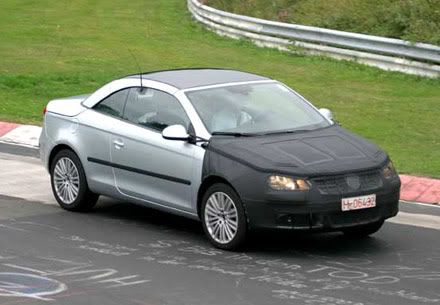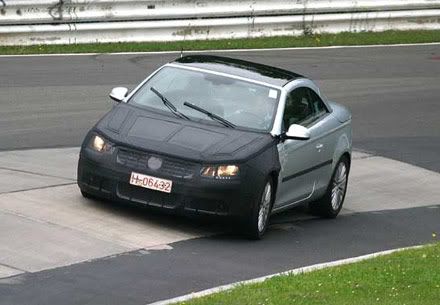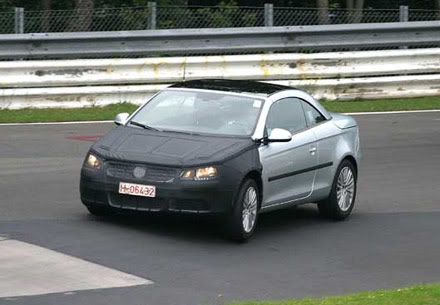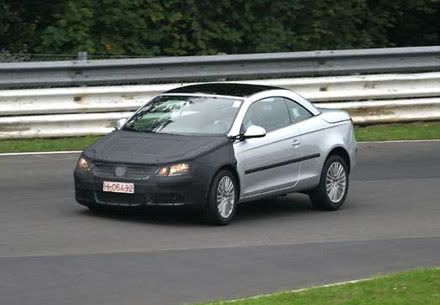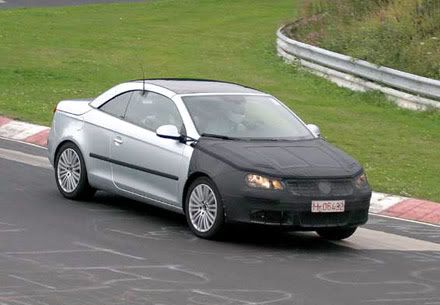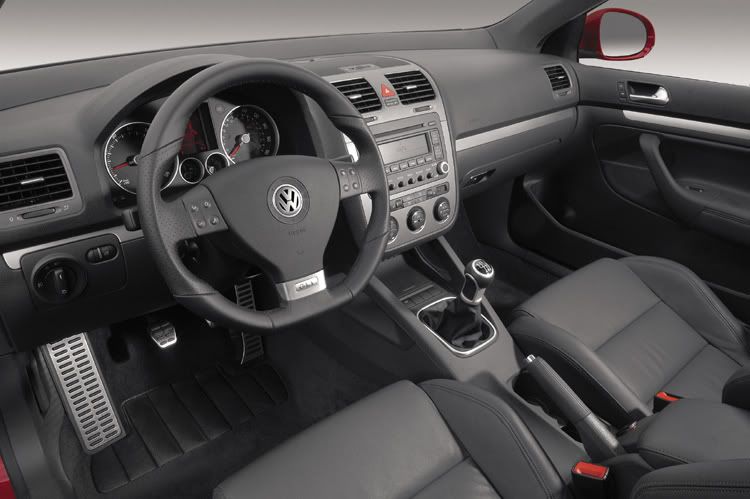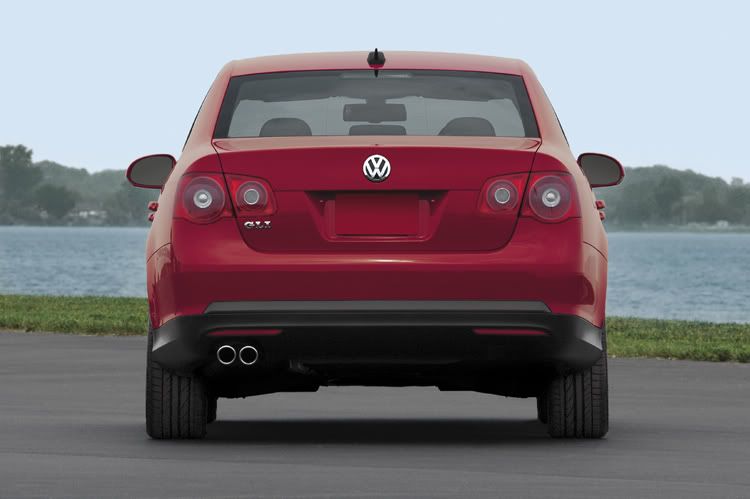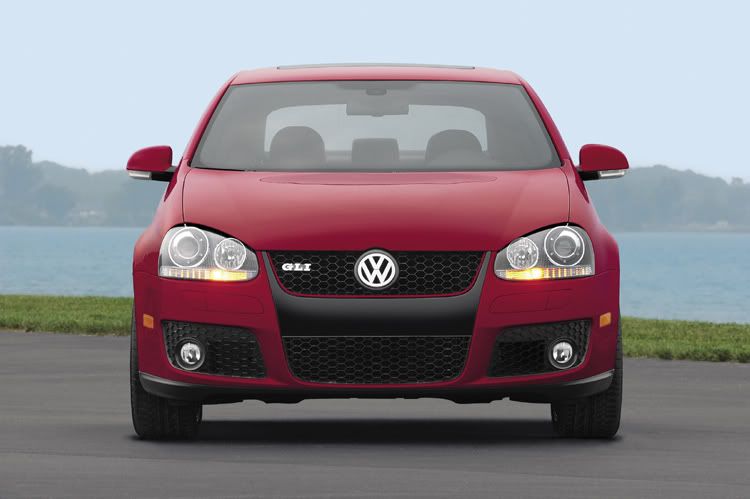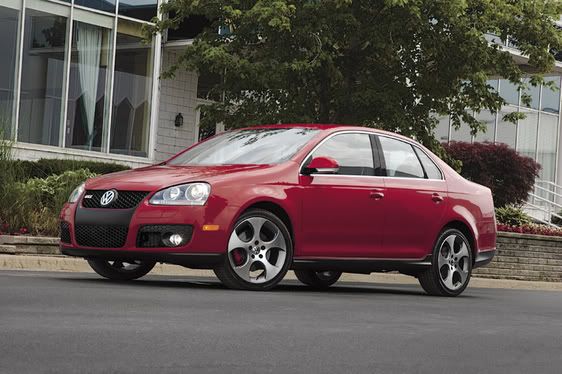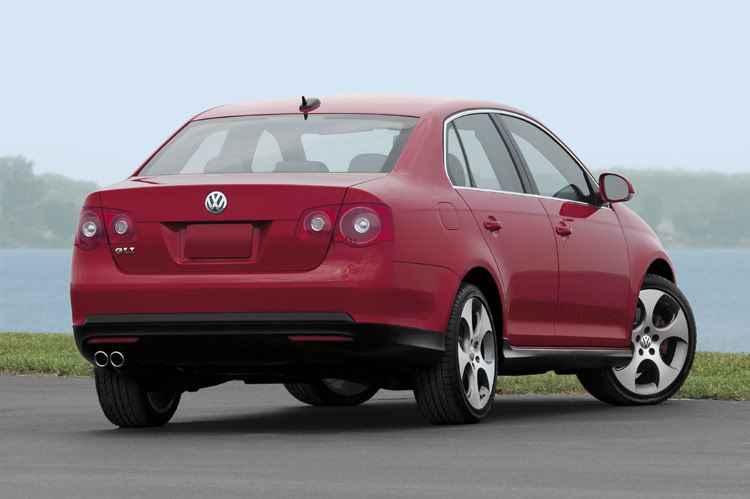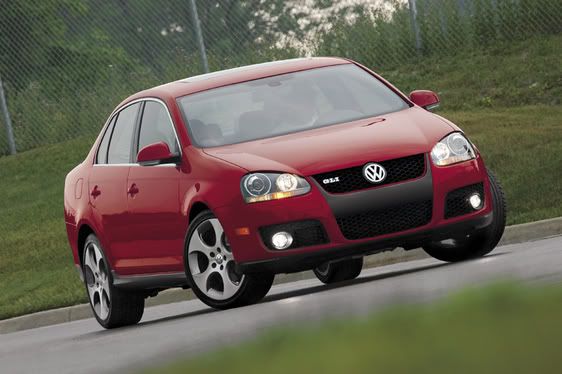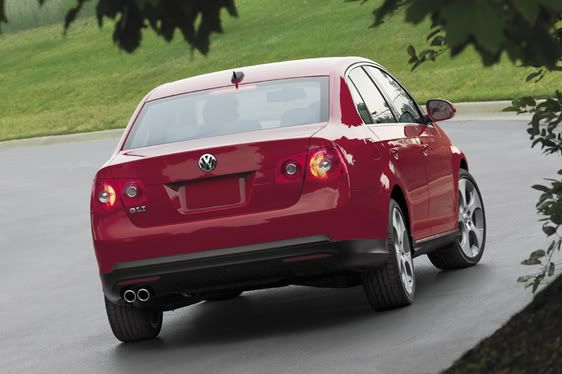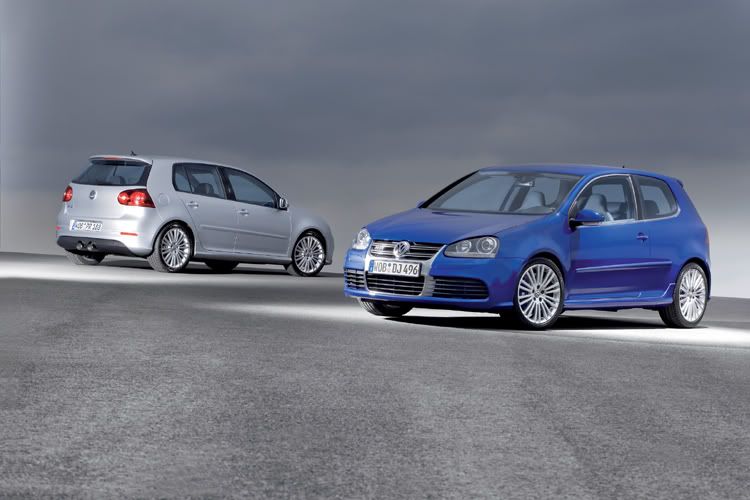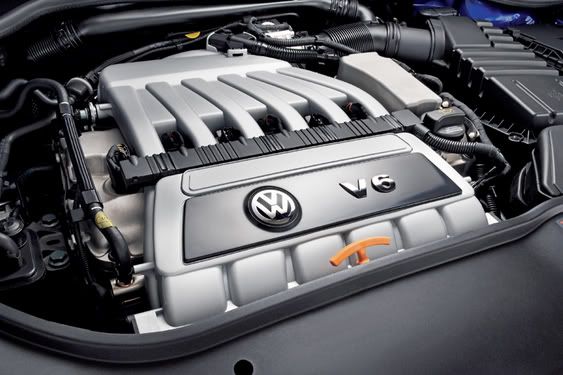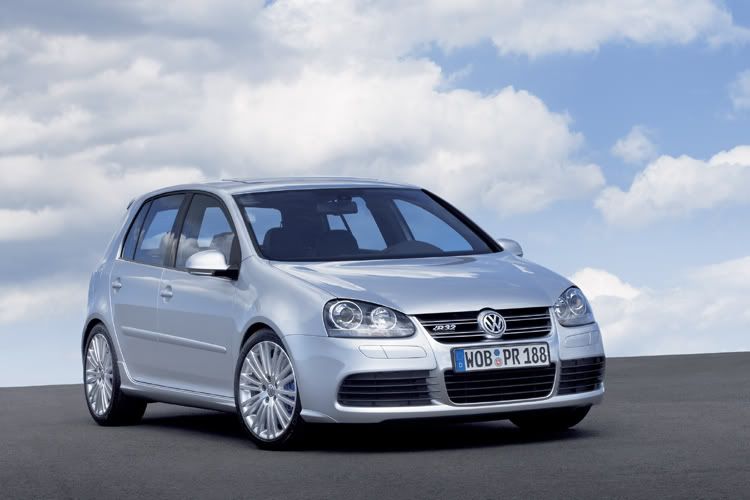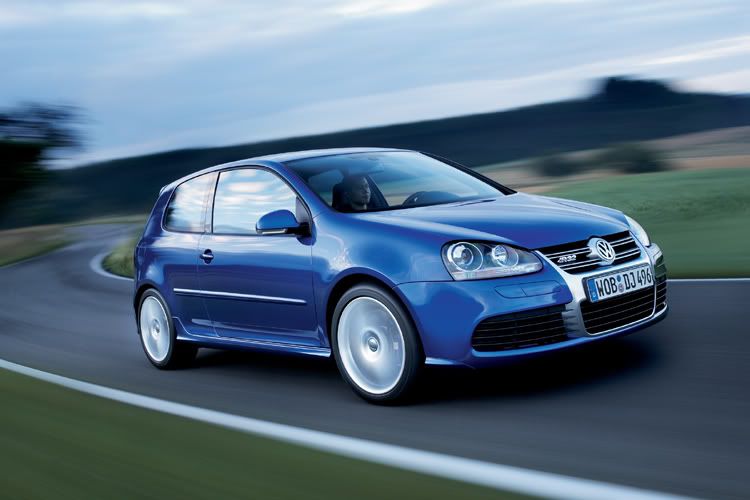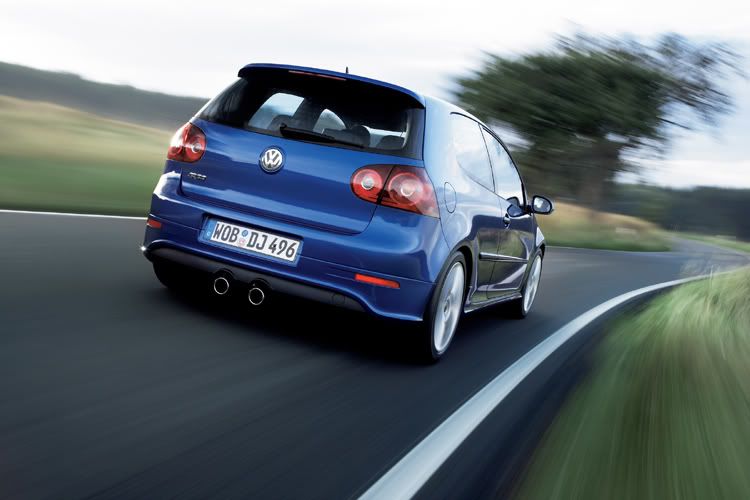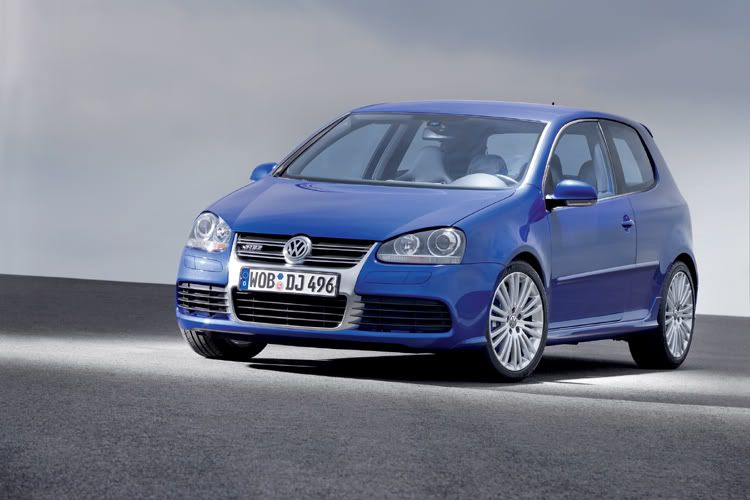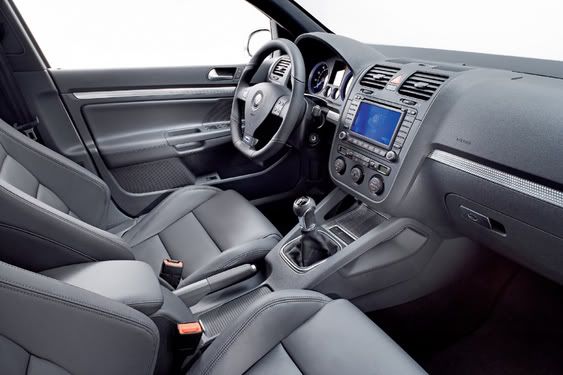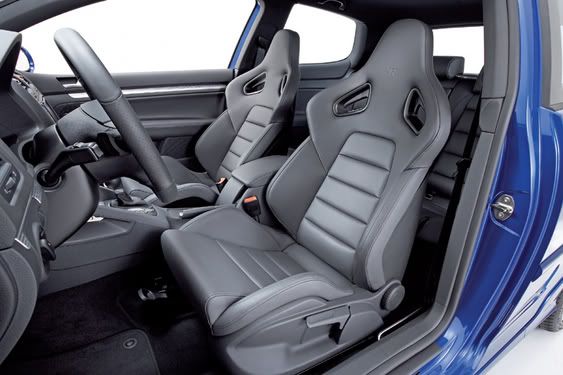Text and photos from Volkswagen of America.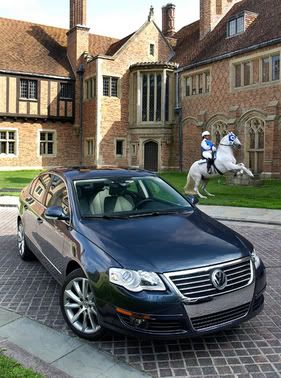
ROCHESTER HILLS, Mich. - The Volkswagen Passat, the mid-sized car that forever changed the attitude of owning a “grown up” family sedan and wagon, is ready to take this popular segment to greater heights and was unveiled at one of metro Detroit’s premier automotive events during a press conference on August 2, 2005 at Meadow Brook Mansion.
For the first time ever, Volkswagen has chosen the burgeoning Meadow Brook Concours d’ Elegance, which has emerged as one of the most renowned automotive events in the world, to take the wraps off its most powerful Passat ever, the 280-horsepower 2006 Passat 3.6L—an all-new car that arrives at U.S. dealerships in two months. For car enthusiasts and admirers of renowned engine designs, the 3.6L marks the return of VW’s groundbreaking narrow-angle six cylinder powerplant – with a significant growth in displacement, brawn and refinement – to the Passat model line up (this historic engine is known as the VR6).
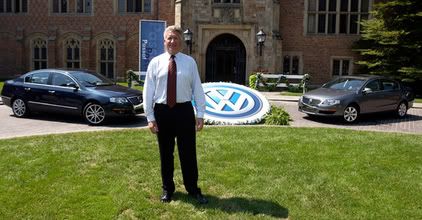
This new Passat will be among the most powerful front-drive, family midsize cars ever offered,
with the refinement, safety and speed of a true Autobahn bred sedan. The V6 offers a nearly class-leading power-to-weight ratio that allows this family hauler to propel from 0-60 mph in just 6.6 seconds.
Prior to the launch of this new top-of-the-line V6, Volkswagen will bring the 2006 new Passat model to the U.S. market beginning this month. This all-new sedan will represent the most, sophisticated and affordable German-built family midsize car on the market today, with the starting price at less than $23,000.
Significantly, the new Passat’s base engine is upgraded to a sophisticated new four-cylinder engine called the 2.0T. This two-liter is efficient and sporty and uses a turbocharger and an intercooler for cool, higher-density intake air. The 2.0T’s high-end breathing is further enhanced by its four-valves per cylinder. The engine’s overall efficiency begins with an advanced direct-injection fuel delivery system that culminates in 200 hp at 5,100 revolutions per minute, and 207 lbs.-ft. of torque all the way from 1,800 rpm to 5,000 rpm—an extraordinary torque curve that provides plenty of pulling power from the low end through the top.
Soon after the launch of this new 2.0T engine, Volkswagen’s renowned narrow-angle six-cylinder technology will make its return to the Passat line up. With the Passat’s return to a transverse engine mount, Volkswagen will re-introduce a very refined and powerful version of
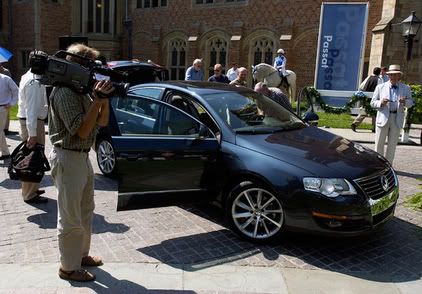
its famous narrow-angle V6 (widely called the VR6; this version’s cylinder bank’s create a “V” angle of just 10.6 º). This newly advanced V6 engine has higher-displacement, four-valves-per-cylinder, and variable valve timing, and promises 280 hp at 6,200 rpm and 265 ft.-lbs, at just 2,750. Mated to this ultimate V6, as standard equipment, will be Volkswagen’s refined six-speed automotive transmission with Tiptronic™ and sport mode selection (no plans for a manual).
Later in the model year, Volkswagen will once again offer the Passat in a wagon version as well. Both the sedan and its variant will offer a 4Motion® (all-wheel-drive) version later in the 2006 model year. Models will therefore include in both body styles: a Passat “Value Edition” 2.0T; a Passat 2.0T; a Passat 3.6L and soon a 3.6L 4Motion.
The launch of the new Passat in the U.S. is no small event. When it arrived on North America’s shores back in 1997, the contemporary Volkswagen Passat sedan and wagon essentially started the transformation of the common family sized car market. The Passat proved that the inevitable midsize car could actually invigorate drivers and passengers alike. It not only offered great utility, value, safety and room but also dynamic European styling, innovative technology and a “real” German-bred driving experience.
Today, this same model is setting a new target for all those manufacturers who have played catch up to meet the new expectations of so many family car buyers. As expected in a modern Volkswagen, the all-new 2006 Passat has been stridently refined and moved closer than ever to perfection in its attention to detail, advanced technology, Teutonic driving qualities and uncompromising safety design and features.
Actually, this new 2006 Passat is the sixth all-new generation of Volkswagen’s midsize car line that can trace its roots back to the Dasher and Quantum of the 1970s and 80s. The outgoing generation that began with the 1998 model in the U.S. was the most successful of any Volkswagen midsize with sales in the U.S. averaging more than 75,000 a year (from 1998-2004).
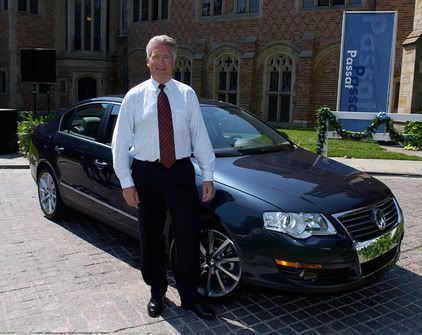
While the dictum of form always follows function is an enduring foundation of Volkswagen design, the exterior and interior styling of the departing but contemporary Passat dazzled this sleepy market with its simple sporty European styling and a refined German driving experience. It was hailed universally as one of the most acclaimed and trendsetting in recent automotive history; and, if imitation is the best form of flattery, then the Passat ranks at the highest end of the admiration spectrum as well.
Fortunately, just as more and more automakers play follow-the-leader and begin perfecting their cloning, Volkswagen’s designers have breathed new passion and power into the look, ambience and spatial presence of an all-new 2006 Passat.
Overall, the sixth Passat is by far the most skillfully refined, secure and technically advanced of any iteration before it. Befitting this progressive target for the newest B class, Volkswagen’s designers harmoniously sculpted a car that is characterized with an almost avant-garde potency and class—one that is clearly muscular, but in a purposeful, sinewy way that commands respect but in no way demands it.
The new Passat goes proudly into the busy world of modern family life with a new medallion-shaped grille accented by brilliantly clear, clean, high-tech headlight housings that exude the precision engineering and advanced production of this new leader of the family class. Its eyes, the front lights, willingly challenge the road ahead, staring it down with the focus of a highly prepared athlete anxious for competition.
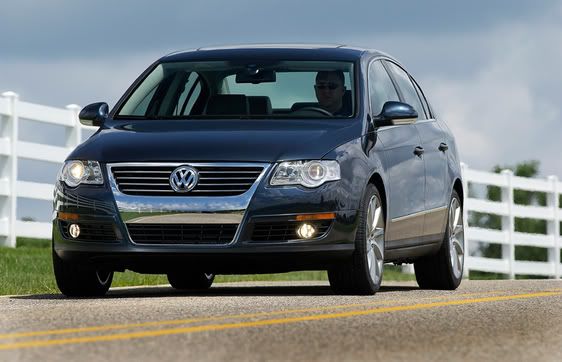
This confident stance is also seen in the new Passat’s silhouette – paralleling in a contemporary way its trendsetting predecessor – arching with functionality, beauty and a timeless tension that creates a visual balance when admiring eyes travel pleasantly from front to rear. At the car’s back, one can see a classic and dynamic Volkswagen design leap that harmoniously mixes sharply tailored rear lighting with an enduring sporty and functional overall design.
The new Passat’s pure exterior dimensions have broadened slightly to accommodate, partly, a more functional and ergonomic interior. The wheelbase lengthens slightly to a new 106.7 inches versus the previous 106.4. Overall length is more dramatic: now 188.2 inches versus 185.2 before. The body is wider as well (71.7 inches as opposed to 68.7). Stability in general should further be enhanced with a wider track Passat layout, both at the front and rear, which measures 61.1 inches (previously 59.6).
A clear indication of the new Passat’s quality foundation is its static torsion stiffness that is measured at a 57 percent higher level than its predecessor’s already solid static rigidity. Dynamically, the new Passat also improves on the Passat’s traditionally stiff driving tolerances that allow for a refined chassis and subsequent ability for engineers to dial in optimum suspension settings and improvements.
The Passat’s fundamentals are the tireless collaboration of designers, the R&D teams, engineers and production experts who have allowed for extremely innovative production methods, new techniques, and materials. This production process is a complex array of advances but the most dramatic contributor is achieved through the use of more high-strength, yet lighter materials throughout and an advanced, highly automated, laser-welding system that requires a battalion of new-generation robotics and elaborate laser-measuring check points. This results in a dramatic increase in laser welded seams, and also helps establish a significant breakthrough in weight barriers that allow for improvements in size, the aforementioned rigid integrity of the overall chassis, and the car’s new class-leading amenities.

Inside, a simple glance reveals another evolution in Volkswagen’s renowned interior design and simple but unrelenting attention to detail. Residing in a new Passat is again a unique and progressive automotive experience: whether at the wheel or residing in the front or rear, the occupants find a fresh, stylish, modern design that remains strikingly simple with use of top quality materials, attention to comfort, driving and details throughout all models, from the standard trim level that symbolizes Volkswagen’s commitment to value for the money, to the top-levels such as those found in numerous equipment options and stand-alone packages.
More exterior room for the new Passat certainly translates into more width and legroom, especially in the rear seating area, where it grows from 35.3 inches to 37.7”. New rear vents for the standard air conditioning and heater also provide more comfort at the car’s stern, and the trunk, which provides a 60/40 split folding seat if needed and pass through for much longer items, is 14.2 cubic feet of space that because of thoughtful overall design offers incredible utility with plenty of neatly unobstructed space. Overall, the new Passat provides 96.3 cubic feet of passenger volume (versus 95 cu.ft. in today’s version).
As one expects of Volkswagens, the new Passat embodies the German engineering mandate of building ever higher and higher levels of advanced occupant protection with each new generation of car. The previous Passat was proven to be among the safest vehicles on the roads of America, regardless of vehicle class or weight. In the most important “real world” study of its type, the highly regarded Insurance Institute for Highway Safety studied data from serious accidents and measured those with the lowest death rates (see IIHS “Status Report, March,” 2005). Among all passenger vehicles, the Passat attained the third lowest death rate. The only “car” ranked higher was the Mercedes E. The only truck, the Toyota 4Runner.
The new 2006 Passat is now the newest example of this important Volkswagen reputation for safety, and brings true Autobahn-bred safety development and features to this family car segment by employing the most comprehensive standard list of advanced passive and active safety technology in its class. Safety is the tantamount function of all that is formed in the creation of a new Volkswagen, which is why the German automaker’s overriding philosophy is to bring the most sophisticated safety technology to the widest range of models when feasible.
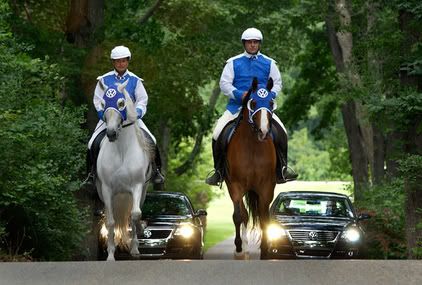
Major standard safety items for the newest Volkswagen--many of which have been updated with the latest in technology but have been standard on Passats for several years—include eight total airbags, including front side thorax airbags, and Side Curtain Protection™ (head) in the front and rear.
A few of the most significant passive safety features now offer standard crash-active front headrests and crash-optimized foot pedals that descend upon serious impact. Daytime Running Lights (DRL), three-point safety belts, and adjustable headrests for all five occupants are also important holdover items to help in protection. And where details and precision positioning count the most, Volkswagen has made sure all outboard occupants are able to easily position their safety belts with shoulder height adjustments. Front belts use pre-tensioners with load limiters, and all safety belts use emergency locking retractors. Rear side thorax airbags are optional for the first time ever in a Passat, and if chosen, will supplement the standard head curtain protection system.
As expected in a Passat, active safety is also tantamount to the development of Volkswagens and the 2006 Passat is no exception and is arguably among the leaders in its segments in offering a list of performance items that can help avoid accidents in the first place, including the stability and surefootedness of a precise-handling front-drive sedan, with standard four-wheel disc ABS brakes that are coupled with a sophisticated Engine Braking Assist system. Another major technical advancement in the new Passat is a standard electro-mechanical power steering system that can help assist with straight-ahead driving adjustments when necessary—an example of this could be freeway driving through strong crosswinds. All Passats come standard with an Electronic Stabilization Program—an active safety item that is being recognized through independent research to be an increasing vital safety features---Anti-Slip Regulation (ASR) and Electronic Differential Locking (EDL). Of course later in the year 2006, all wheel drive comes with 4Motion.
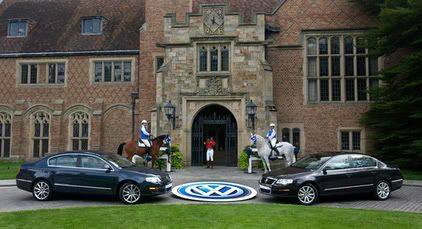
The new Passat employs an advanced version of the tried-and-true independent McPherson strut architecture. The car’s strut-type axle creates a very desirable direct steering ratio; a high level of transversal axle rigidity and a low tendency to allow body roll on tight turns. The Passat’s precise handling is only one attribute of this front suspension; this design also helps enhance its ride through the optimization of the springs, the separate mounting of springs and dampers, improved mounting points for the lower wishbones, and the use of twin-sleeve shock absorbers. This, of course, offers less noise during varied driving conditions and surfaces.
At the rear, the new Passat is now equipped with an advanced multi-link independent rear suspension. This feature promises to help the Passat set a new standard in its market segment by providing an ideal balance of sporty driving dynamics and ride sophistication. This fully independent four-link suspension, with coil springs, telescopic shocks and stabilizer bar, also allowed the designers and engineers to create more utilitarian space and practicality including great width in the luggage compartment.
Handling performance is honed to perfection by a new electro-mechanical power rack-and-pinion steering system that offers an extremely good "center feel" and contributes significantly to the new car’s confident-feeling stability. Unlike some similar systems found on luxury cars, the new Passat’s function varies the steering assist based on the speed of the car and other driving factors. This gives the Passat driver a desirable connected-to-the-road feel but also provides the added capability of active-return steering and straight-ahead driving correction assistance.
As expected, Volkswagen is backing the new Passat with a comprehensive warranty that includes a bumper-to-bumper New Vehicle Limited Warranty for four years or 50,000 miles, whichever comes first, with wear-and-tear items and adjustments covered during the initial 12 months or 12,000 miles. Additional coverage is provided by 24-hour roadside assistance for four years with unlimited mileage, a five year/60,000-mile Powertrain Limited Warranty and a Limited Warranty against Corrosion Perforation for 12 years with unlimited mileage.
Here is a list of some of the new Passat’s latest developments:
- All-new sixth generation Passat – completely redesigned and restyled inside and out
- Standard 2.0T turbocharged four-cylinder with direct injection, 200 hp, 207 ft.-lbs. torque
- Available 3.6L V6, 280 hp, 265 ft.-lbs. torque with standard six-speed automatic
transmission with Tiptronic (4th quarter 2006)
- 2.4” more rear legroom than previous generation (37.7” vs. 35.3”)
- 1.5” wider track front and rear (61.1” vs. 59.6”)
- 3.0” wider body width (71.7” vs. 68.7”)
- 106.7” wheelbase (106.7” vs. 106.4”)
- Overall length of 188.2” (188.2” vs. 185.2”)
- Six-speed manual transmission, optional six-speed automatic with Tiptronic on 2.0T
- A/C standard on all models
- Dual-zone automatic climate control (Climatronic) optional on 3.6L
- Standard Eight-speaker AM/FM/CD sound system that is MP3 format compatible
- Premium sound with in-dash six-disk CD changer optional on 2.0T, standard on 3.6L.
- Dynaudio sound system optional, marking a first in the U.S. car market. Coming from
Denmark’s most exclusive stereo maker, the Dynaudio system is custom designed to the
Passat to achieve the best audio experience possible.
- Walnut, or brushed aluminum trim optional on 3.6L
- Available 10-way power driver seat, available 12-way on 3.6L.
- Optional DVD Navigation system, audible with color screen
- Electronic parking brake standard
- Tire-pressure monitoring system standard
- Optional multi-functional steering wheel
- Standard tilt and telescoping four-spoke steering wheel
- Leatherette seat trim standard, leather optional
- Rear passenger vents for A/C and heat standard
- 60/40 split folding rear seats with folding center armrest and pass-through feature
- Front center armrest with cooling storage feature
- ABS with four-wheel front vented disks standard
- Electronic Stabilization Program with brake assist standard
- EDL, ASR
- Standard crash-active head restraints
- 4Motion available with 3.6L V6 (later in 2006 MY)
- Eight air bags standard with rear side-thorax airbags optional
- Fully independent four-link rear suspension
- Electromechanical power steering
- Park distance control optional on 3.6L
- Bi-Xenon headlights with washers optional on 3.6L
- 18” wheels optional on 3.6L (delayed introduction)
“4Motion” is a registered trademark of Volkswagen. “Side Curtain Protection” is a trademark of Volkswagen. All other trademarks used in this document are the property of their respective owners.

